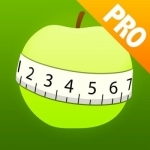
Her - LGBTQ Dating
Dating, Lifestyle and Social Networking
App
Her is the biggest (and best!) app for lesbian, bisexual and queer people worldwide. Surround...

Golden Hour One - weather for photographers
Weather and Photo & Video
App
*** Featured on the AppStore FRONT PAGE! *** ".... GoldenHour.One gets the Fstoppers seal of...

Gorilla Workout: Bodyweight Fitness Program
Health & Fitness and Lifestyle
App
"You don't need any exercise equipment for this program, but expect to use every part of your body"...

MyColorful – Coloring Book for Adults
Entertainment and Lifestyle
App
With My Coloring (adult coloring book), it is very easy to create masterpieces, because coloring...

Map My Run+ by Under Armour
Health & Fitness and Social Networking
App
Track and map every run with MapMyRun+ with no ads to distract you. Get feedback and stats to...

Aquarimate
Productivity and Utilities
App
A must have app to maintain your awesome thriving aquariums! Designed to manage both Freshwater and...

Jorte Calendar
Productivity and Utilities
App
With over 30 million downloads, Jorte is one of the most popular calendar/organizer applications....

Polar Scope Align Pro
Utilities
App
Please note that the only in-app purchases available are tips. All functionality is included. Polar...

MyNetDiary PRO - Calorie Counter and Food Diary
Health & Fitness and Lifestyle
App
Lose weight and get healthy with the world’s smartest diet app. The app takes care of everything -...

Safe Lagoon Parental Control & Screen Time Manager
Lifestyle
App
Safe Lagoon helps you save time providing healthy mobile device experiences for your kids. Our pact...